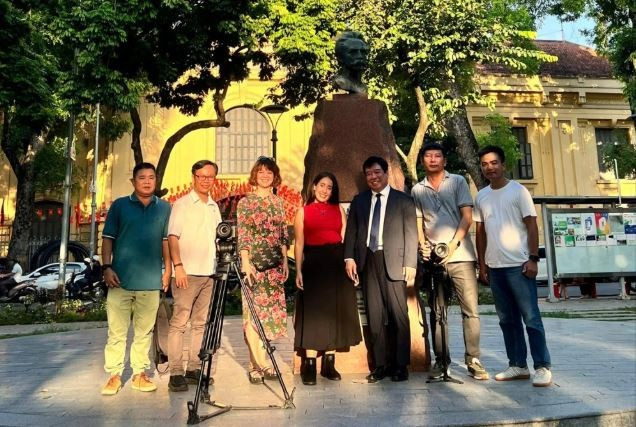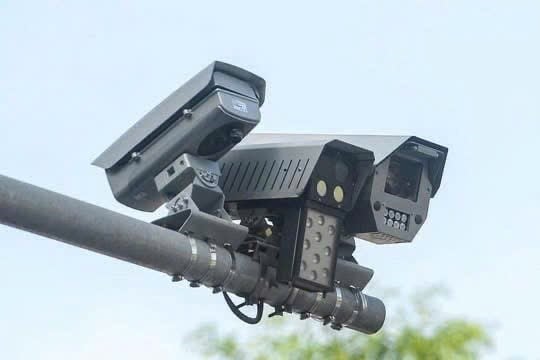 Life & Style
Life & Style

Đặng Nhật Minh’s 1997 account of the beginning of the Vietnamese uprising against the French colonialists in Hà Nội Winter 1946 has long been a favourite among Vietnamese audiences and foreigners inclined to seek such a film out.
 |
| Actor Tiến Hợi in the role of Hồ Chí Minh in Hà Nội Winter 1946. — Photo baomoi.com |
Peter Cowan
Đặng Nhật Minh’s 1997 account of the beginning of the Vietnamese uprising against the French colonialists in Hà Nội Winter 1946 has long been a favourite among Vietnamese audiences and foreigners inclined to seek such a film out.
The war-time epic’s popularity was clear to see among the audience at the Hà Nội Cinematheque for a Thursday night screening and Q&A with the director as part of the cinema’s week-long celebration of Minh’s films, curated by Dutch poet Dick Gebuys.
While the film is certainly entertaining for those with an affinity for or knowledge of Việt Nam, the recounting of an obscure, for most foreigners, piece of history may be difficult for the casual movie-goer to appreciate.
Hà Nội Winter 1946 tells the story of President Hồ Chí Minh’s efforts to negotiate autonomy for Việt Nam from French colonialists. The film follows three young Vietnamese men and shows how the political situation of the time affected the average person.
Minh was clearly concerned with maintaining historical accuracy and this is one of the film’s strengths. The film captures the oppression normal Vietnamese people suffered by showing calm, serene scenes of everyday life and then swiftly having French troops brutally and randomly attacking Vietnamese people, though the film was not entirely unkind to the colonialists, with the character Michel, in particular, being easy to identify with.
Featuring several letters from Hồ Chí Minh to his fellow Vietnamese or to French diplomats, Minh ensured accuracy by using the actual letters the President wrote and cutting them into poignant moments of the film. However, the letters were often simply read out with the camera focused on Hồ Chí Minh writing them, which did slow the pace of the film. The glowing portrayal of the President may also be jarring for some foreigners, given the disdain for politicians in many Western countries.
One point where the film’s accuracy could be questioned is the sparseness of female characters involved in resistance efforts. While there are a few small roles for female fighters, the biggest female role in the film goes to the pregnant wife of Lâm, one of the resistance fighters. The importance of women in all of Việt Nam’s wars has been well documented, and while this film may be missing a feminine touch, Minh’s other films, including the highly acclaimed Don’t Burn, certainly make up for this.
On the whole, historical accuracy was a point in Hà Nội Winter 1946’s favour as it lends the movie legitimacy it may not otherwise have. Dick Gebuys pointed out how important showing the truth was to Minh, the director, once telling him he did not want to make a movie for the altar of any ancestors.
While accuracy was paramount, Minh effectively used his artistic license to ensure Hà Nội Winter 1946 entertained, as well as educated. The battle scenes, while of course looking dated almost 20 years on, were shot in a way that portrayed the chaos and terror of war. The climactic scene where Việt Minh fighters begin singing after running out of bullets was especially poignant. After the screening, Minh explained how he had read a French soldier’s diary who described exactly such a scene.
The young Việt Minh fighter Toàn was another highlight of the film. Toàn led the attack on a French ship on the Hồng (Red) River to steal weapons for his comrades, the French afterwards demand Hồ Chí Minh turn the young man over to them. Toàn’s recklessness and bravado deftly show the difficulties the President faced in negotiating with the French, having to prepare for peace but also be ready for war. Hà nội Winter 1946 portrays this dichotomy effectively and puts a human face to the carnage colonialism wreaks on the young in Toàn.
Perhaps the biggest problem with Hà Nội Winter 1946, especially for a foreign audience, is the poor sub-titling. Of course this is no fault of the director but the obviously inaccurate translations sometime detracted from the experience. A Vietnamese audience member remarked that the film deserved better subtitles, and she wasn’t wrong.
Overall, Hà Nội Winter 1946 certainly achieved Minh’s aim of creating a historically accurate epic that also portrayed the effect that the momentous political events of 1946 had on average Vietnamese people. He said he did not want to be known as a "war director" and the film can also be scored a success in that regard, with its portrayal of some of Vietnamese culture’s quirks enlightening and memorable. Some knowledge of the context of the film was, however, needed to fully enjoy it, and the Q&A afterwards certainly added to the experience. Hà Nội Winter 1946 is definitely worth a watch, albeit after a quick read on the period in which the film is set. — VNS